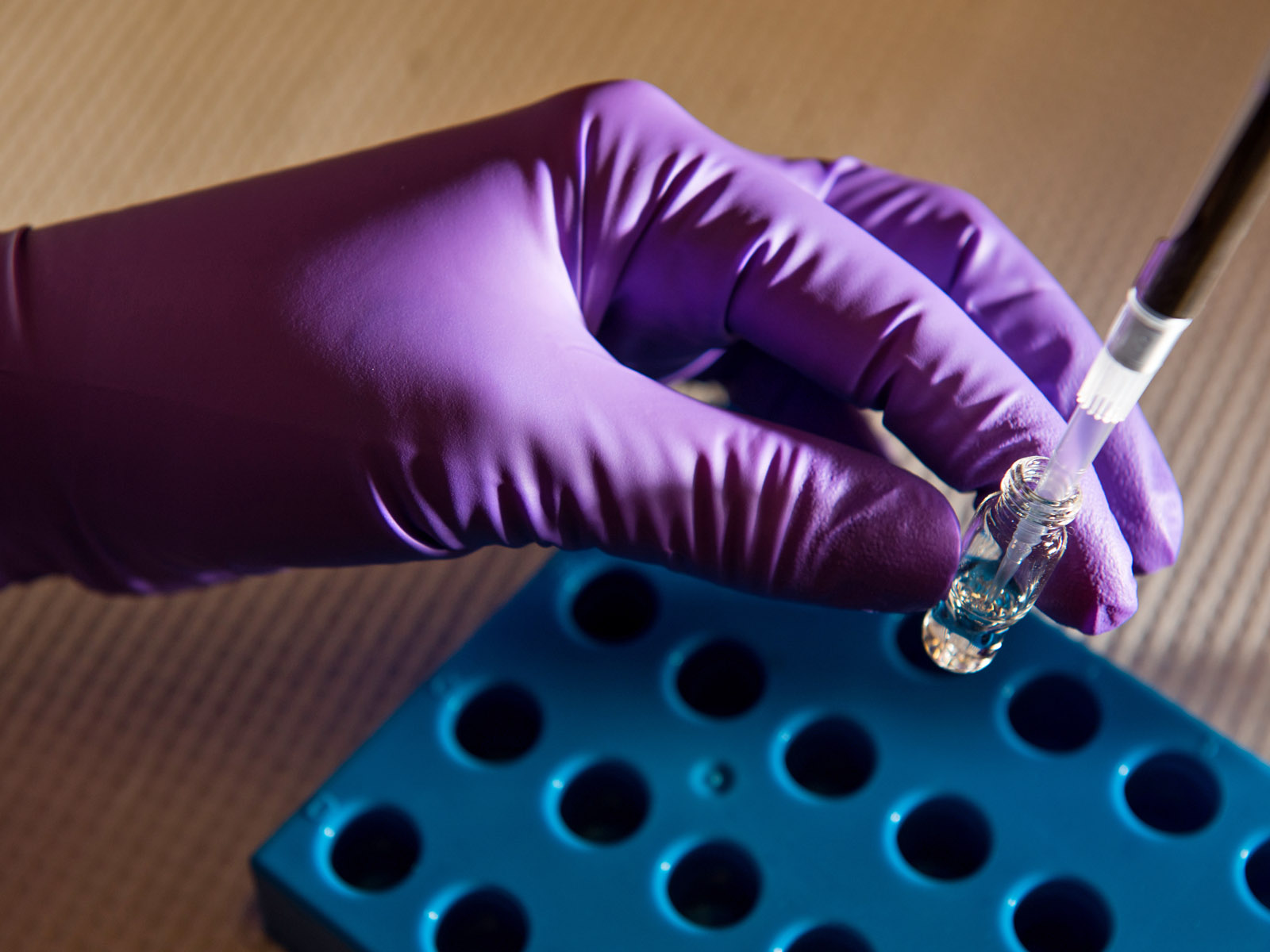Single Cell
Proteomics
Single Cell
Proteomics
Protein patterns
with precision
Protein patterns
with precision
As cells lose proteins, they make more. First, a template of DNA transcribes RNA; then, amino acids are assembled—or translated—from RNA.
Post-translation, amino acids may be modified by enzymes. They become a highly complex family of biological operatives, including signature proteins (biomarkers) for disease states.
The hunt for these biomarkers makes characterizing proteins on a large scale—or proteomics—consequential to understanding human health and disease states. In particular, proteomics investigates cell signaling. When this coordination of cellular activity goes awry, disease can be the consequence.
Our Proteomics team develops and refines technologies for characterizing the proteome: high-field mass spectrometry, synthetic antibodies used as molecular reagents and biosensors, fast and sensitive proteomic assays, advanced computational biology, and proteomic data interpretation and modeling.
The team is sharpening promising nano-separation and analysis technologies that enable protein characterization in small samples—for example, in just 1,000 human blood cells.
Proteins by the thousands
As cells lose proteins, they make more. First, a template of DNA transcribes RNA; then, amino acids are assembled—or translated—from RNA.
Post-translation, amino acids may be modified by enzymes. They become a highly complex family of biological operatives, including signature proteins (biomarkers) for disease states.
The hunt for these biomarkers makes characterizing proteins on a large scale—or proteomics—consequential to understanding human health and disease states. In particular, proteomics investigates cell signaling. When this coordination of cellular activity goes awry, disease can be the consequence.
Our Proteomics team develops and refines technologies for characterizing the proteome: high-field mass spectrometry, synthetic antibodies used as molecular reagents and biosensors, fast and sensitive proteomic assays, advanced computational biology, and proteomic data interpretation and modeling.
The team is sharpening promising nano-separation and analysis technologies that enable protein characterization in small samples—for example, in just 1,000 human blood cells.
Single cell measurements
As cells lose proteins, they make more. First, a template of DNA transcribes RNA; then, amino acids are assembled—or translated—from RNA.
Post-translation, amino acids may be modified by enzymes. They become a highly complex family of biological operatives, including signature proteins (biomarkers) for disease states.

The hunt for these biomarkers makes characterizing proteins on a large scale—or proteomics—consequential to understanding human health and disease states. In particular, proteomics investigates cell signaling. When this coordination of cellular activity goes awry, disease can be the consequence.
Our Proteomics team develops and refines technologies for characterizing the proteome: high-field mass spectrometry, synthetic antibodies used as molecular reagents and biosensors, fast and sensitive proteomic assays, advanced computational biology, and proteomic data interpretation and modeling.
The team is sharpening promising nano-separation and analysis technologies that enable protein characterization in small samples—for example, in just 1,000 human blood cells.
Applications
As cells lose proteins, they make more. First, a template of DNA transcribes RNA; then, amino acids are assembled—or translated—from RNA.
Post-translation, amino acids may be modified by enzymes. They become a highly complex family of biological operatives, including signature proteins (biomarkers) for disease states.
The hunt for these biomarkers makes characterizing proteins on a large scale—or proteomics—consequential to understanding human health and disease states. In particular, proteomics investigates cell signaling. When this coordination of cellular activity goes awry, disease can be the consequence.